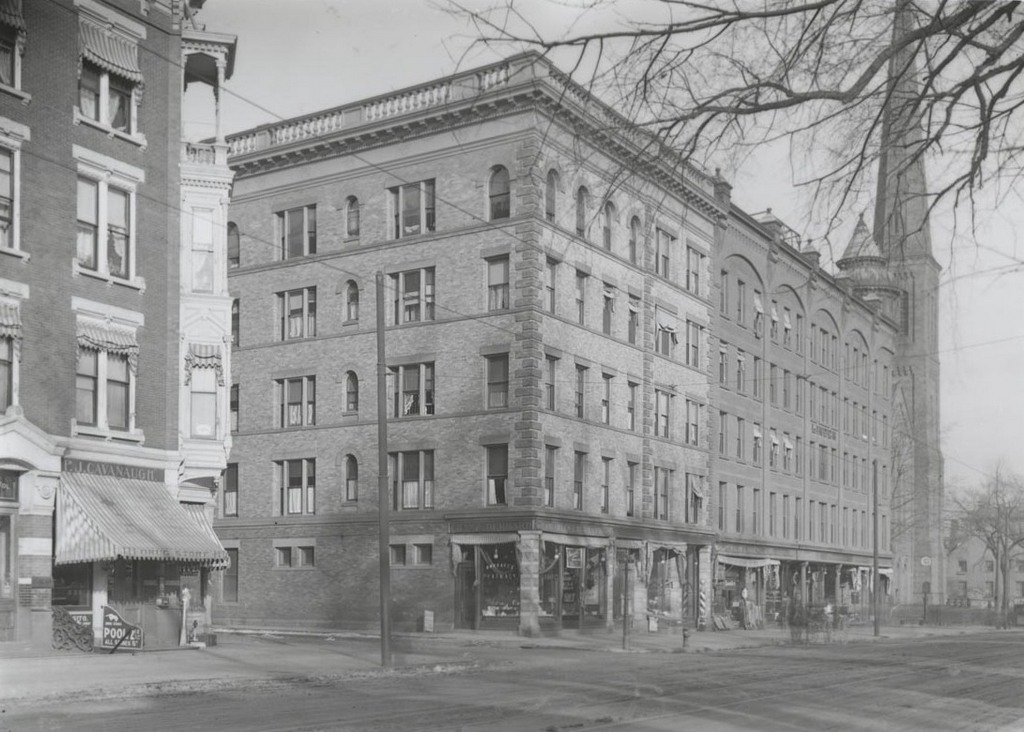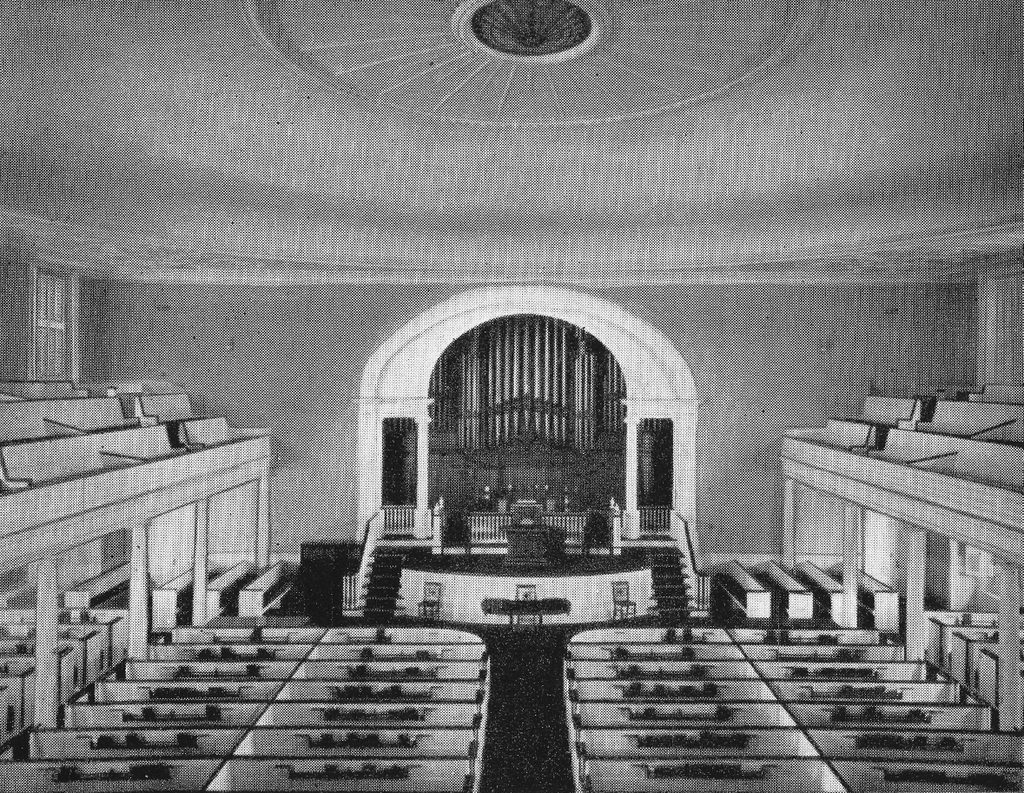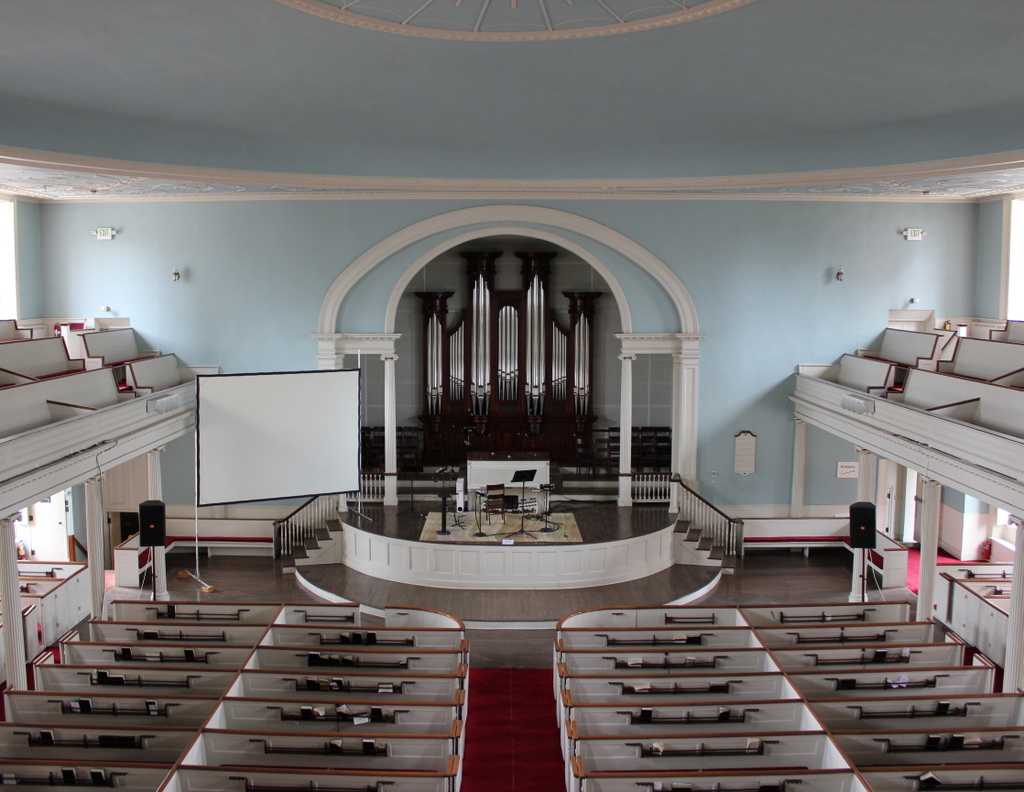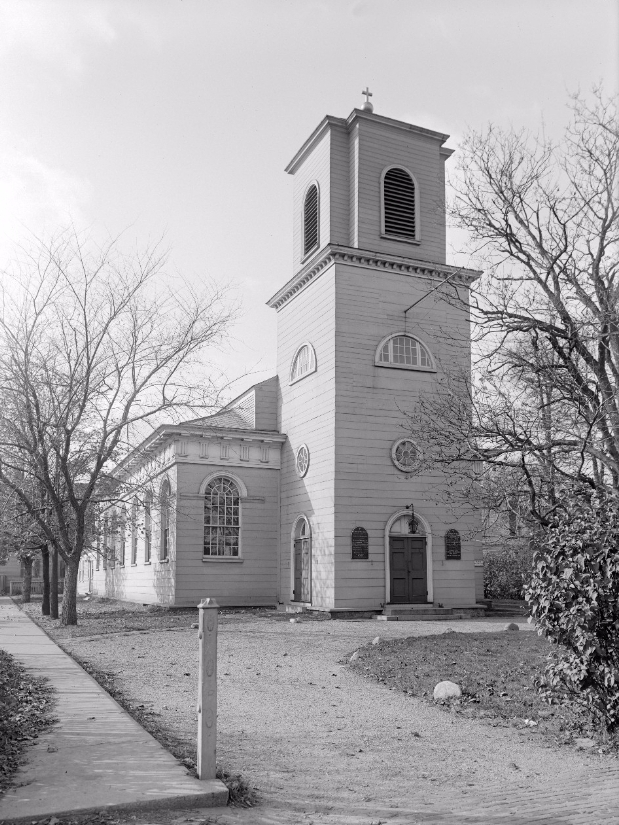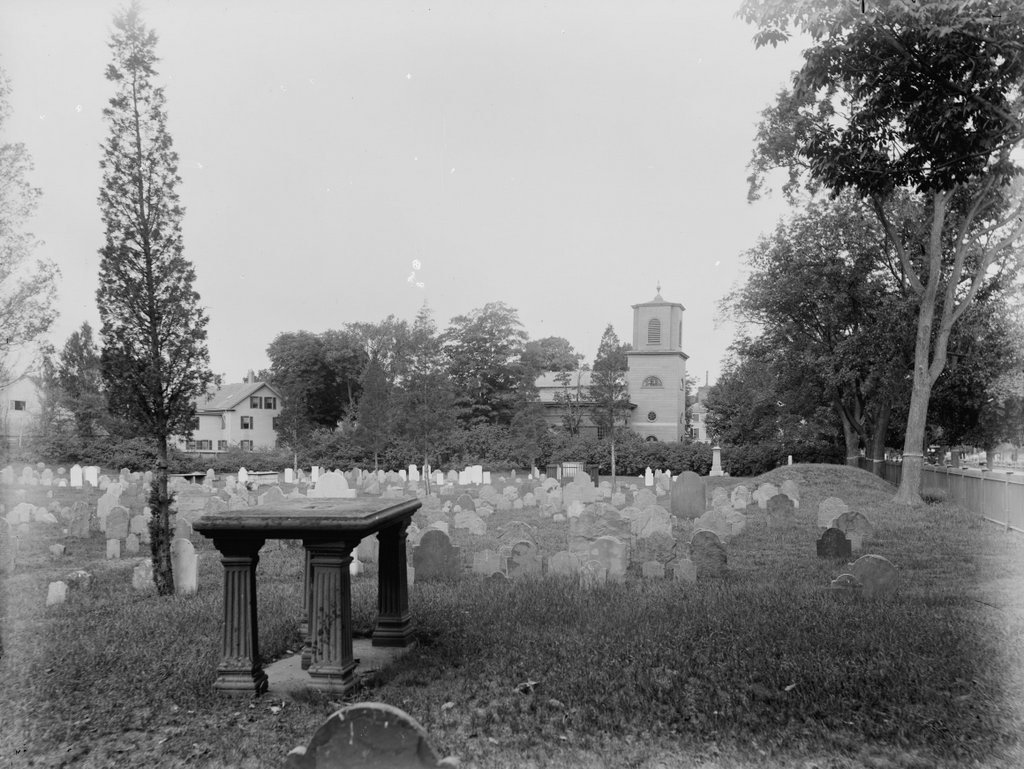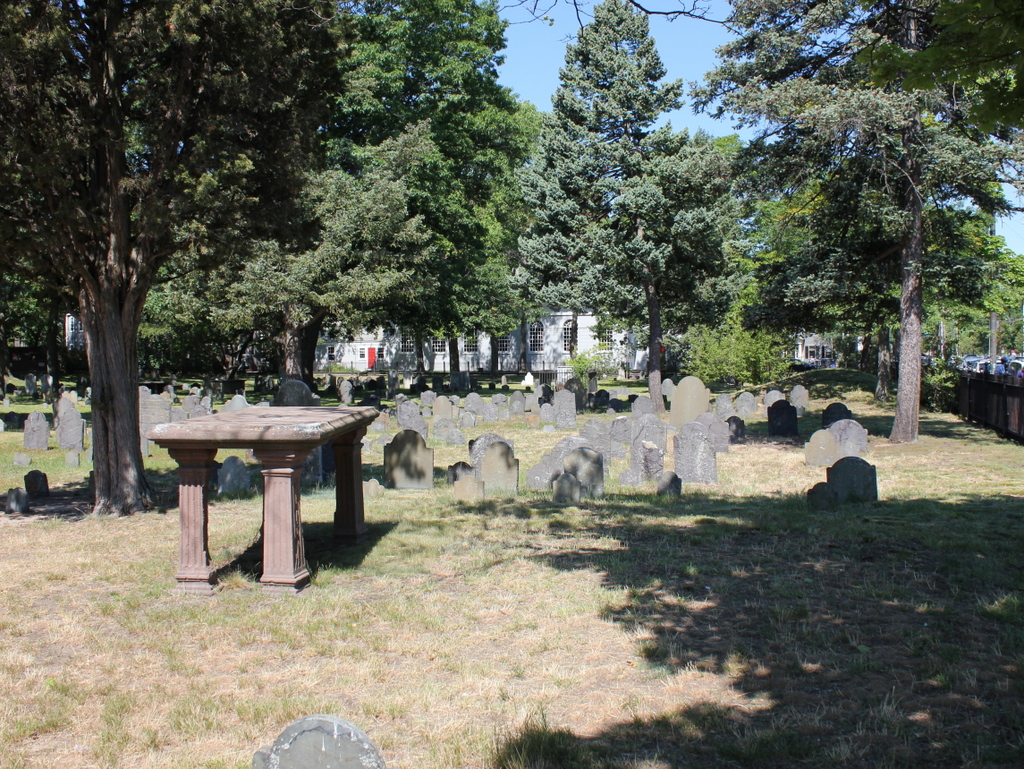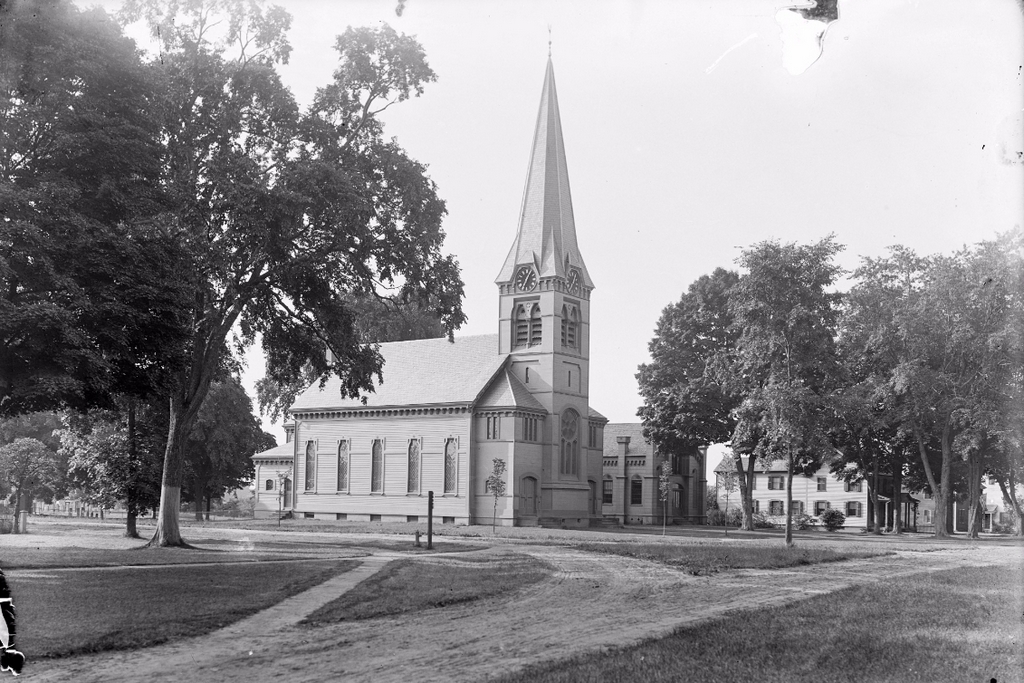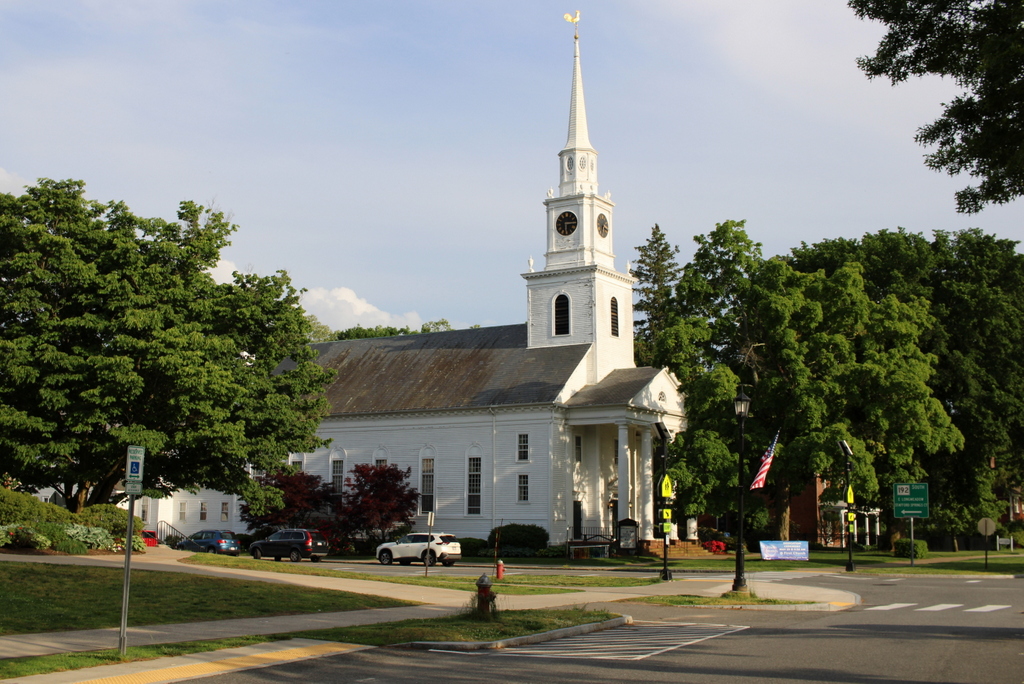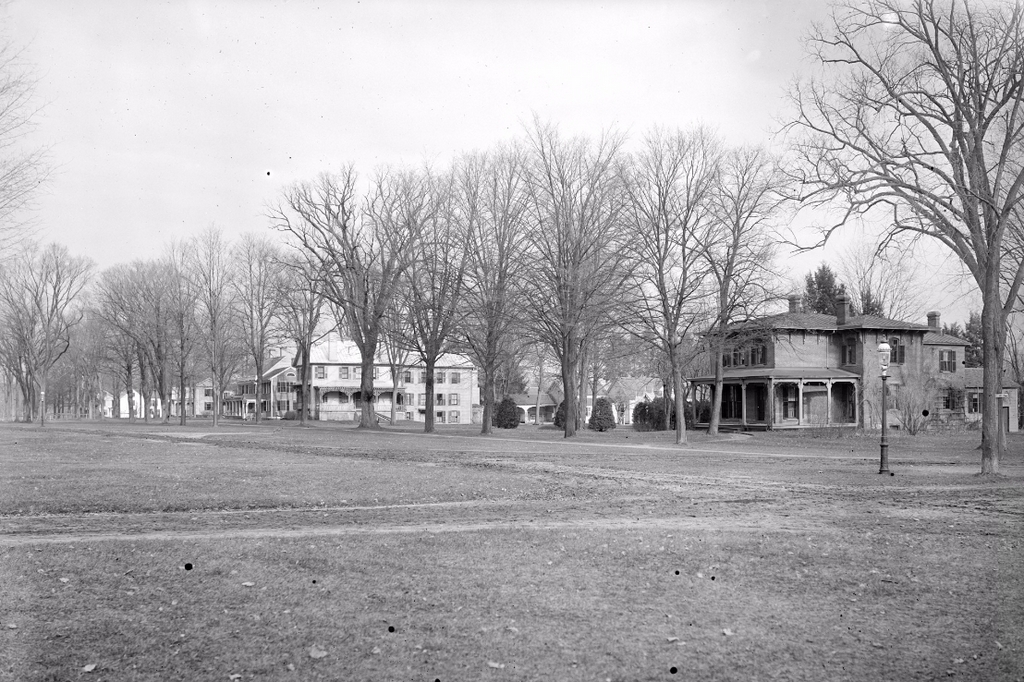Looking north on Main Street from near the corner of Capitol Avenue, around 1903-1906. Image courtesy of the Connecticut State Library.
The scene in 2016:
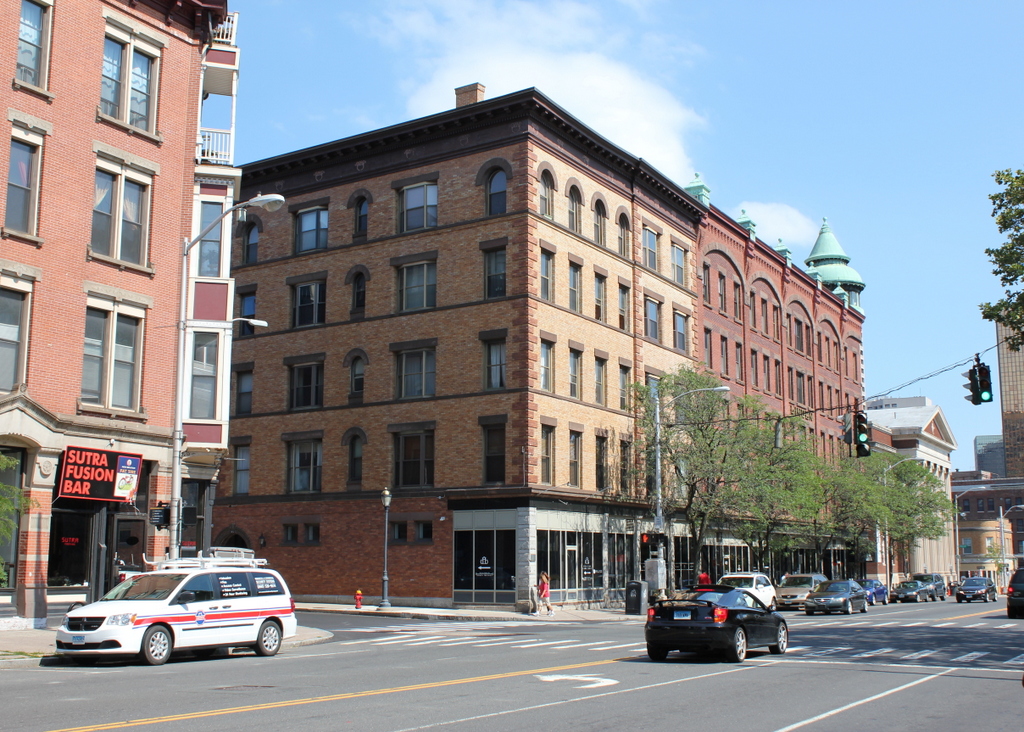
Very little has changed along this section of Main Street, which is part of the Buckingham Square Historic District. It consists of a number of historic buildings from the late 1800s, including several in this view. On the left is the Hotel Capitol, which was built in 1875, and on the other side of Capitol Avenue, in the center of the photos, are two slightly newer buildings. The yellow brick one to the left was built in 1895 by hotel owners Gilbert and Louis Heublein, and the one on the right is the Linden, which was built in 1891 as an upscale apartment building. The only building from the first photo that is no longer standing is the South Baptist Church in the distance on the right. Built in 1854 at the corner of Main and Elm, it was demolished in the 1920s after the congregation merged with another Baptist church. They formed the Central Baptist Church, which opened the present-day building on the same location in 1926.

